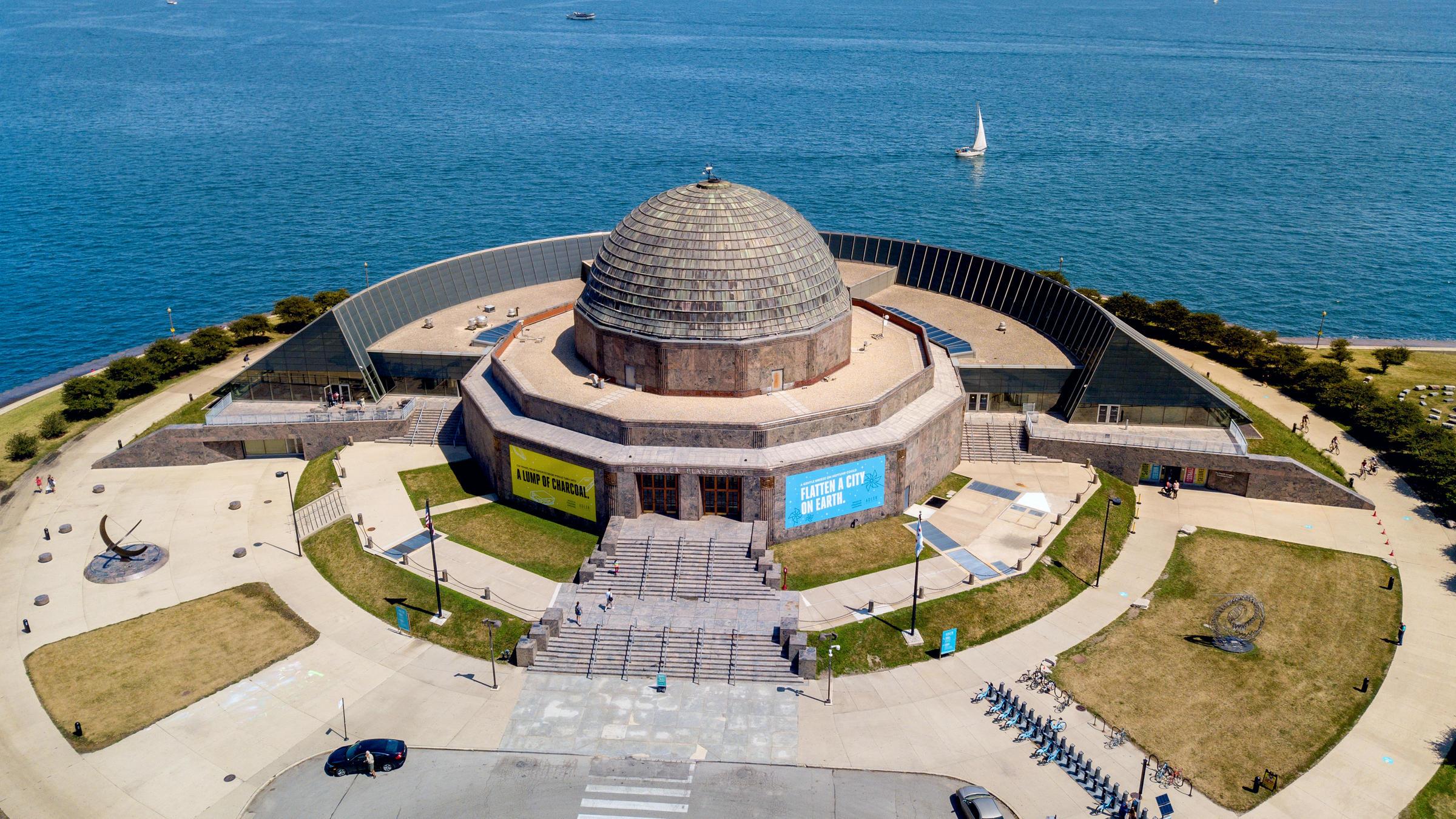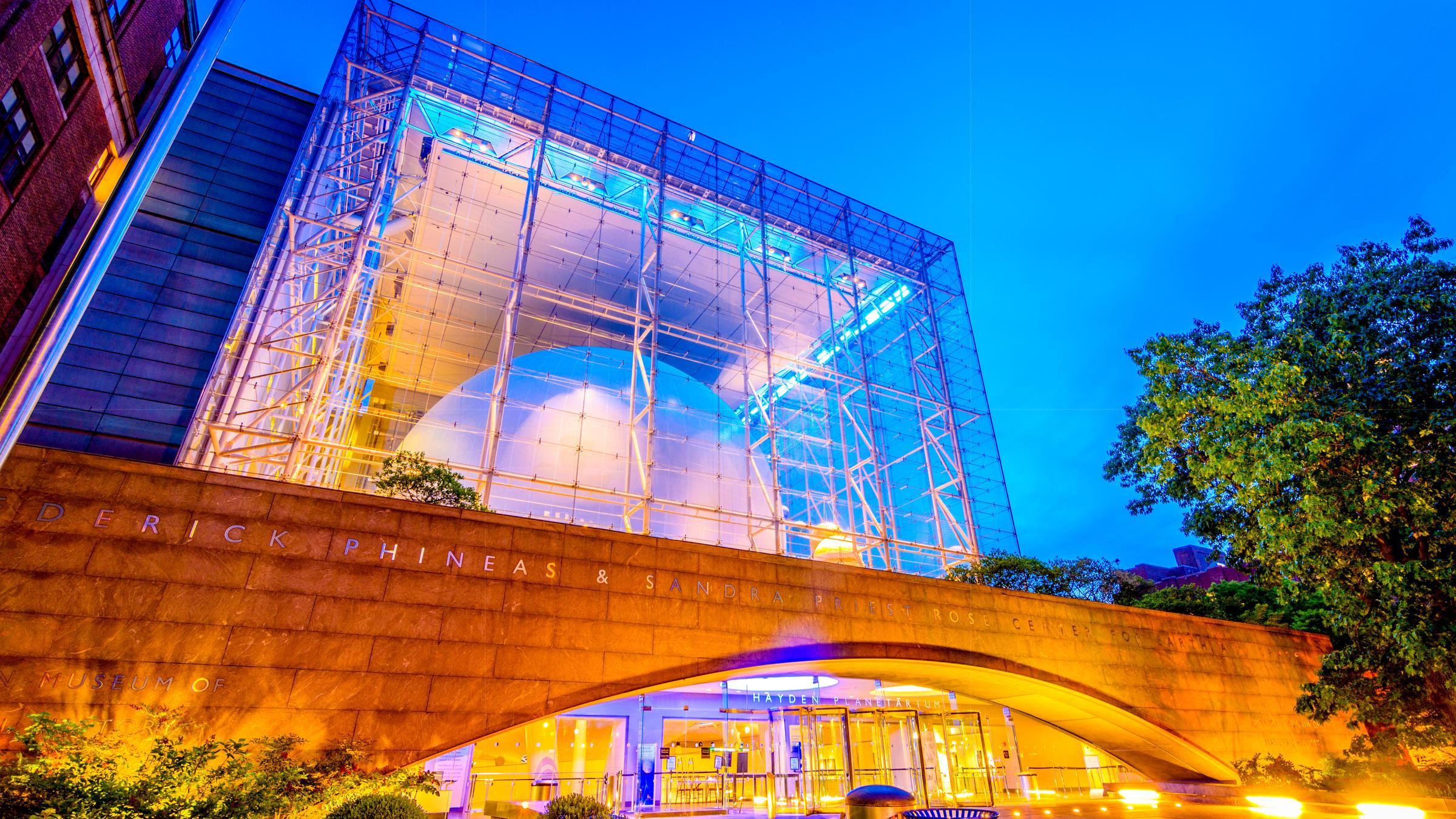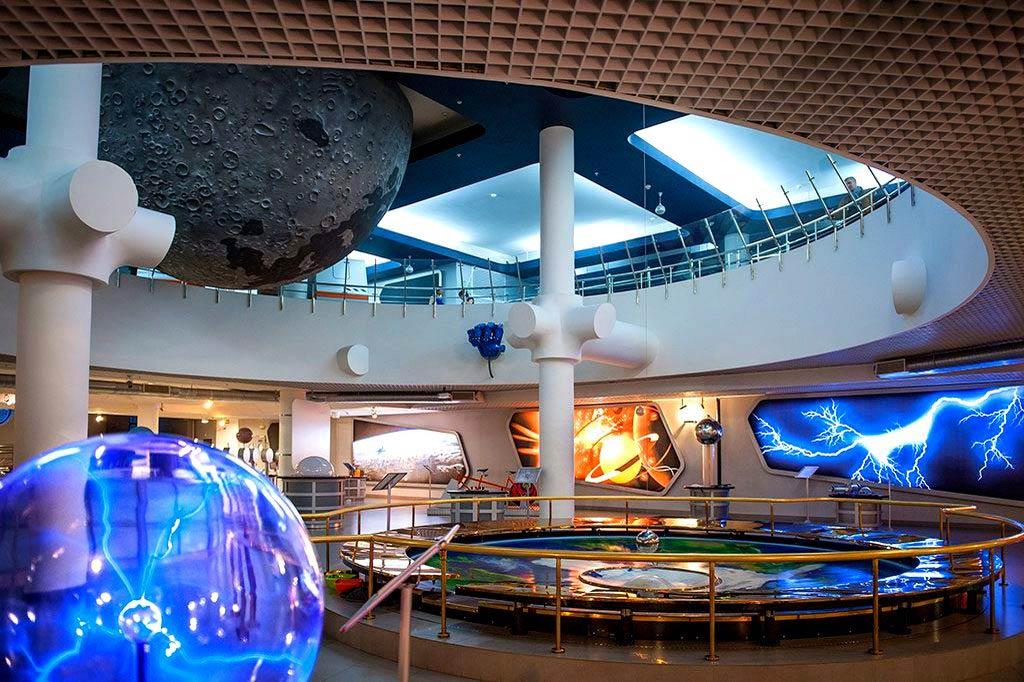Until interplanetary travel becomes accessible to everyone, the mysteries of the universe and the joys of their exploration can be experienced on Earth. To see the sky as astronauts see it beyond Earth's atmosphere and get closer to space and stars, all you need to do is visit a planetarium! Today, there are several thousand planetariums around the world.
We have selected the TOP 10 most interesting ones for you:
1. Planetarium of the Deutsches Museum in Munich, Germany:
The world's first planetarium was opened in Munich on May 7, 1925, on the premises of the Deutsches Museum. The full name of this institution can be translated as the "German Museum of Natural Sciences and Technology Achievements." It is the most visited, significant, and largest technical museum not only in Germany but in all of Europe.
The initiator of the planetarium's creation was Oscar von Miller, the first director and founder of the museum. The Deutsches Museum Planetarium allowed for the demonstration of the entire starry sky except for a small area near the southern pole of the world occupied by the projector mount. By rotating around the polar axis, the projector also simulated the daily motion of the sky.
Today, using a precise mechanical optical star projector and a digital projection system, visitors can gain a deep understanding of the universe. The observatory offers two observation options: the eastern dome with the Görz mirror telescope and the western dome with a refractor (lens telescope) by Zeiss. There are daytime observations available, as well as evening observations twice a week. Below the planetarium, there are observation platforms accessible to visitors, providing a panoramic view of part of Munich. Over the course of its existence, the planetarium has been visited by more than 8.3 million guests.

Adler Planetarium in Chicago, USA:
Even if you are far from science and can only accurately identify the Moon in the night sky, it is still worth paying attention to the Adler Planetarium in Chicago. Just to see what modern high-tech museums dedicated to space look like.
Adler Planetarium is the first planetarium outside of Europe. It was built by businessman and philanthropist Max Adler in 1930. The planetarium consisted of three full-sized spherical theaters and had a seating capacity of 199. Over time, the planetarium underwent numerous quality changes. In 2011, it was equipped with the latest projection system, which achieves ultra-high clarity and allows for images with the highest resolution.
Adler Planetarium houses one of the world's finest collections of astronomical artifacts, including the world's oldest sundial and a telescope made by the renowned English astronomer William Herschel.
Adler Planetarium presents itself to its guests in several forms: it is an engaging museum, a genuine scientific institution, a space theater, and a restaurant with original futuristic interiors. The monumental building of the planetarium sprawls across 11,000 square meters, and next to this giant structure, you feel like a speck in open space.
The pavilions and halls of the planetarium are located on two levels. The central place is occupied by the oldest sky theater, the Grainger Sky Theater, which uses state-of-the-art digital projectors. The permanent exhibition "Our Solar System," dedicated to the solar system, is housed in the Sky Pavilion. Its main task is to tell the story of celestial bodies endlessly revolving around our Sun.
In the Mission Moon pavilion, the focus is on the Earth's eternal satellite, the Moon, and the history of journeys to it. The main exhibit is the recreated Gemini 12 mission spacecraft and related artifacts. The interactive apparatus called the Moon Wall allows you to feel like you're flying over the lunar surface. The permanent exhibitions on the lower level cover a variety of topics related to astronomy and technology for observing celestial bodies. It is also where the space theaters are located, hosting captivating space-themed presentations and spectacular 3D shows transmitted by a modern digital system. These unique performances make spectators feel as if they are being transported into open space with comets passing by.

Nagoya City Science Museum Planetarium in Nagoya, Japan:
The world's largest planetarium is located in the Science Museum in Nagoya, Japan. The structure of the planetarium is shaped like a huge silver sphere, sandwiched between two buildings. The diameter of the globe is 35 meters, and it is covered with 700 special panels. Inside the sphere, there are 350 comfortable seats for spectators, and in the center of the hall is a star projector. The locals call the planetarium "Brother Earth".
Thanks to the state-of-the-art "Universarium" projector, the planetarium accurately reproduces the movements of the planets and the phases of the Moon. Moreover, it displays the positions and brightness of over 9,000 stars with high realism, which can be observed without special equipment from anywhere on Earth. The star panorama changes monthly, according to the seasons and the positions of celestial bodies.
In addition, the planetarium has a room where the temperature can be maintained at -30°C. Here, visitors can experience a very realistic view of the Northern Lights. There is also a large screen room where an 8-meter tornado is simulated. In the next museum hall, visitors can observe robot football players.
The planetarium, opened in 2011, is listed in the Guinness World Records. Previously, this title also belonged to a Japanese planetarium, which is 5 meters smaller than the "Brother Earth".

Hayden Planetarium in New York City, USA:
Hayden Planetarium is one of the departments of the American Museum of Natural History in New York City. It is housed within a massive glass cube, enclosing a large sphere. Inside the planetarium, there is an extraordinary theater where spectators can embark on a virtual space journey.
It is the most spectacular and visited planetarium in the world, with a capacity of 429 seats. It is equipped with a powerful computer system that allows for the creation of unique cosmic shows. One such show is "Journey to the Stars," narrated by Whoopi Goldberg. This cosmic show is renowned as the most spectacular and vibrant in the world. Another interesting fact is that Hayden Planetarium utilizes real data and galaxy models provided by NASA and the European Space Agency in creating its virtual digital universe.
The planetarium is also home to the famous astronomer Neil deGrasse Tyson, who has been its director since 1995. He frequently conducts lectures and presentations for visitors, sharing insights about space and science. Overall, it is a unique place that allows visitors to learn more about the cosmos and our planet while enjoying beautiful views of the starry sky. In 2000, the magazine "Time" named Hayden Planetarium the winner in the category of "Best Design of 2000."

Carl Zeiss Planetarium in Stuttgart, Germany:
The most interactive planetarium in the world. Its history dates back to 1938, but during the war, the planetarium was destroyed and only rebuilt in 1977. In the Carl Zeiss Planetarium, the night sky is displayed as seen by astronauts beyond Earth's atmosphere. During a session, electronic and laser technology is used, accompanied by stereophonic acoustics, and the soft chairs rotate and adjust the inclination of the backrest.
This modern and high-tech planetarium offers a wide range of educational and developmental programs. All of them are designed for visitors at different levels of knowledge. Here, you can find simplified children's programs with visual examples of elementary astronomy, as well as serious projects that delve into the study of space and the entire universe, such as programs about "Black Holes" and "Dark Matter."

Moscow Planetarium in Moscow, Russia:
The Moscow Planetarium was opened on November 5, 1929, becoming the 13th planetarium in the world and the third planetarium outside of Germany. The Moscow Planetarium served not only as a cultural center and important landmark but also as an educational institution. From 1960 to 1975, navigation classes were held with future cosmonauts in the Great Star Hall. Thus, the planetarium played one of the most important roles in the development of space exploration.
From 1994 to June 2011, the Moscow Planetarium was closed for major renovations. During the renovation, it was equipped with state-of-the-art technical equipment, including the most advanced opto-fiber apparatus produced by Carl Zeiss Jena. Currently, the main hall of the Planetarium, the Star Hall, is the largest in Europe, with a dome screen diameter of 25 meters and an area of 1,000 square meters.
Today, the Moscow Planetarium features the Great Star Hall, the Urania Museum, the interactive museum "Lunarium," the Sky Park with two observatory towers, a 4D cinema, and the Small Star Hall. All of this makes the Moscow Planetarium a truly unique place that is a must-visit for everyone.

Planetarium in Nicosia, Cyprus:
On June 4, 2023, in the Tamassos area of Nicosia, the largest planetarium in the Eastern Mediterranean and the first planetarium in Cyprus was opened.
This unique space combines elements of education and entertainment. It has an area of 900 square meters and can accommodate 180 people. The planetarium consists of three buildings. The project was designed by architect Angelos Savvidis, and the construction is carried out by the company T&O Planetarium of Cyprus.
Guests have the opportunity to immerse themselves in the magic of the celestial space in the demonstration hall, where scientific and artistic films about the cosmos are shown under a huge dome. They can also visit exhibition halls, rooms with elements of virtual reality, and an open-air amphitheater.
The planetarium also features an observatory with a 4-meter robotic dome, housing a powerful 14-inch telescope for observing the night sky and a helioscope for observing the Sun and captivating solar flares. The telescope and helioscope are equipped with a 62-megapixel Sony IMX455 CMOS camera for real-time photography and remote streaming. This allows for live broadcasts from the observatory directly to the planetarium dome, conference hall, open-air amphitheater, and other planetariums around the world.
Adjacent to the observatory is a 250-seat amphitheater with a 15 square meter open video wall, sound equipment, and lighting for live performances. For virtual reality enthusiasts, the planetarium offers a VR room with gaming simulators, as well as a VR Edutainment Hall where you can watch short educational and entertaining films about planets or play on a 100-inch interactive table with a flat screen.
The new planetarium in the Tamasos area is among the top ten in Europe, thanks to its huge dome, which is one of the largest in the world. With the help of digital technologies, it can project the starry sky from the inside.

Are you interested in real estate on the island? Take a look at the number one real estate agency in Cyprus, DOM! The agency's website features the largest property database in the country, with over 30,000 residential and commercial properties throughout the island. Choose and reach out to professional brokers who will help you make the right choice!
Read also:

